- Outdoor
- Tours
Road trip
A spellbinding tour
Travel by car, bicycle, or motorcycle. From alpine pastures in mountain passes to lakes in valleys and chapels in villages.
The Route des Grandes Alpes has quite a story to tell as it crosses the Haute-Savoie to the Savoie.
Frédérique and Dimitri stopped off at 13 legs between Thonon-les-Bains and Valloire with David Déréani from the Action Culturelle Internationale en Montagne as their guide. A trip back in time!
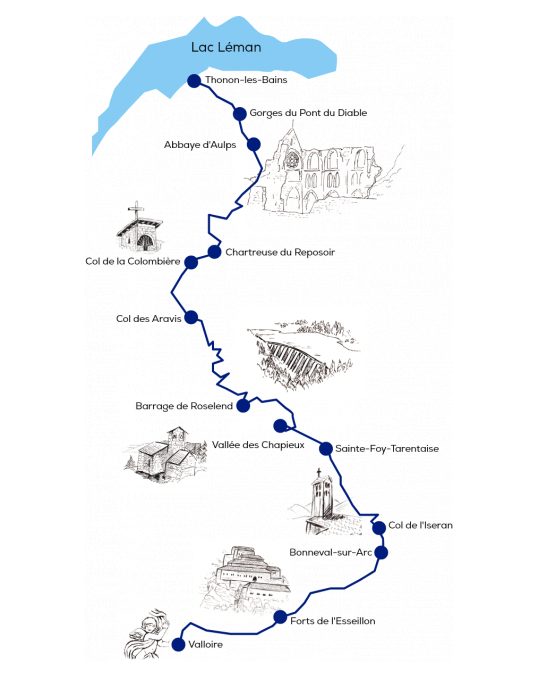
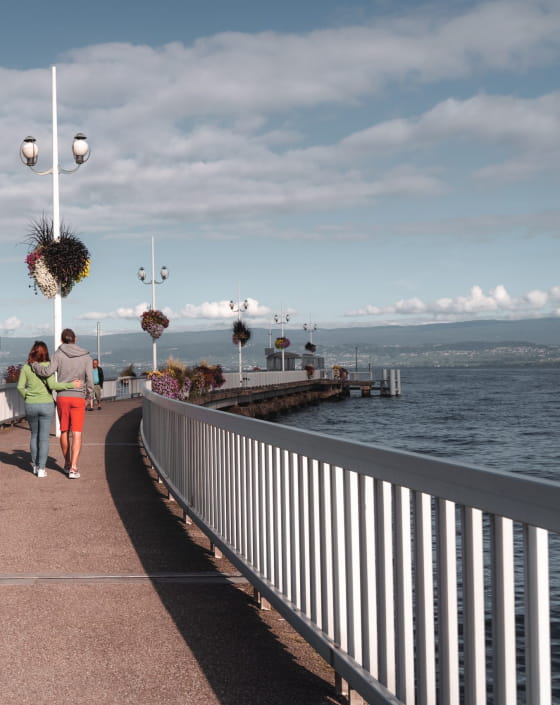
Thonon-les-Bains
Day of relaxation before hitting the road. Calm mode activated. In the morning, we play Napoleon III and his beloved Eugénie with a bit of cocooning. They influenced the explosion of thermal spas in the 19th century. In the afternoon, a stroll along Lake Geneva. Warm Sun. Ice cream in hand. A trip on the funicular railway brings us to the top. An unobstructed view of the lake. A feast for the eyes.
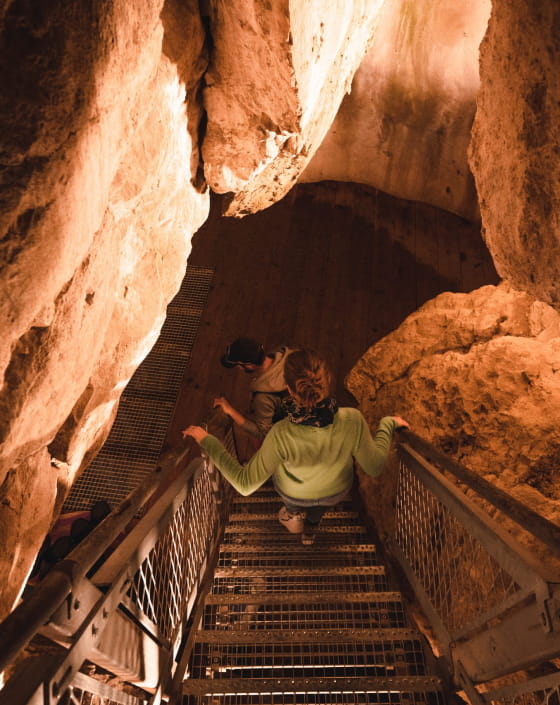
Gorges du Pont du Diable
We meet up with David the next day to begin our trip towards the south. When the destination is announced, we imagine a trip to purgatory. It's the opposite. The gorges are heavenly. Colourful mineral-draped walls, sculpted marble, and caverns carved 10,000 years before. Grey, green, blue, and ochre. We gape at the drop 50 metres above the River Dranse.
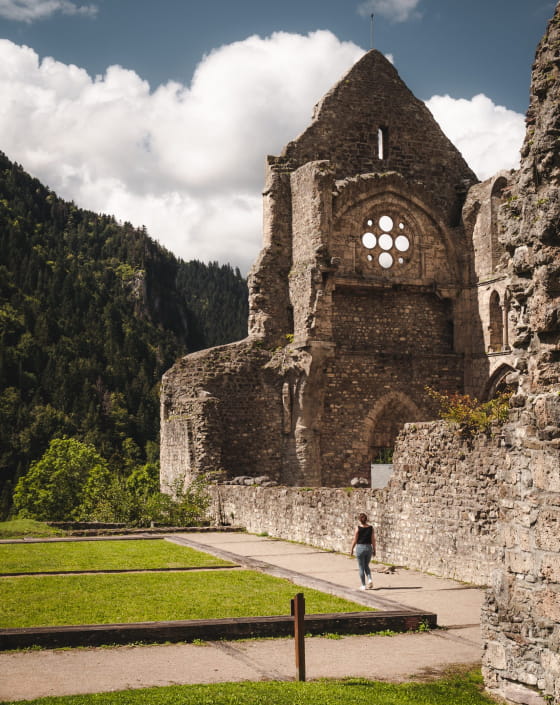
Aulps Abbey
We leave to rub elbows with 11th-century medieval Savoie. Return under the divine auspices of the Chablais Mountains. We weave between the walls of the ancient abbey. The abbey was partially destroyed in the 19th century. The stones were used to rebuild the village church, pave the roads, and erect homes.
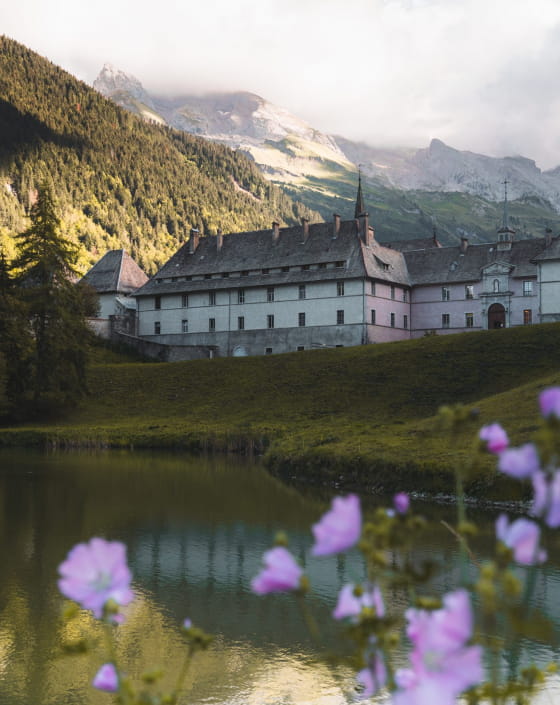
Chartreuse du Reposoir
The tranquil route continues to the south. We arrive just before the sun sets. The 12th-century monastery stands proudly between the lake and Pointe Percée. The colours have just dimmed across its façade. A dreamlike display. All three of us play the Quiet Game. As the Carmelites who live here have done since 1932.
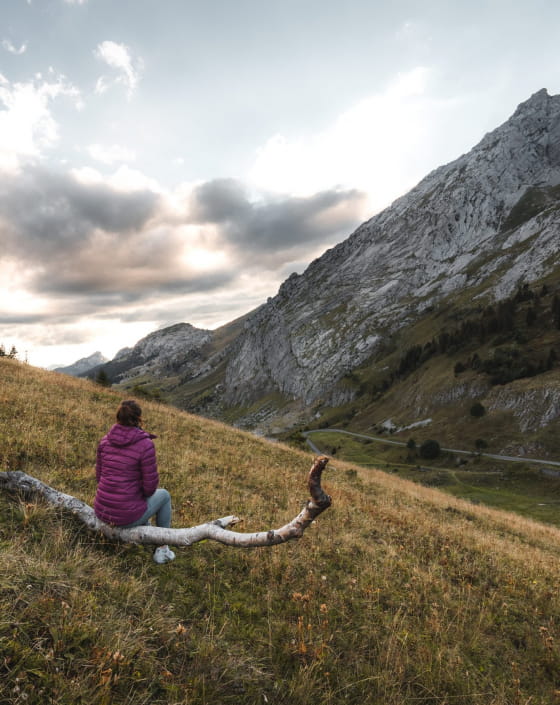
Col de la Colombière
David takes us to the first mountain pass at the crack of dawn. 1,607 or 1,613 or 1,618 metres? No one agrees on its exact altitude.
One certain thing, though, is that this mountain pass whets our appetite. After the Chablais Mountains and its delicious Abondance cheese, we come upon the Aravis range—home of Reblochon. Our recipe to feeling less guilty about our cheesy indulgence? A trek on the trail that leaves from the Col de la Colombière to explore the Bargy Mountains.
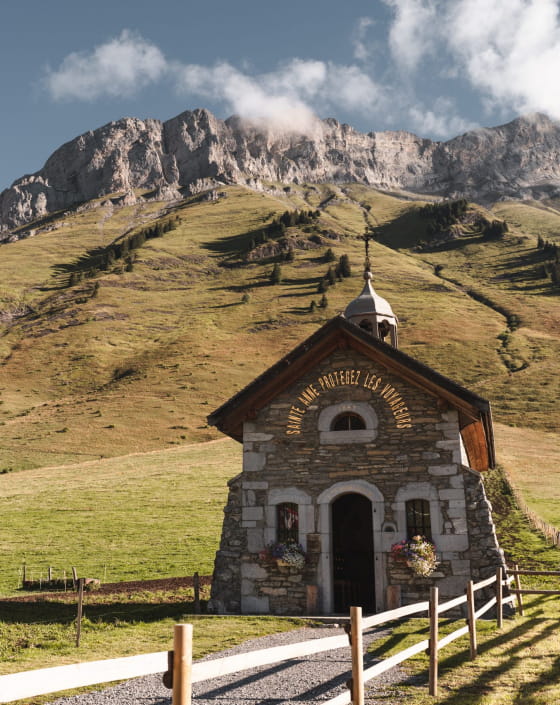
Col des Aravis (and Lake Confins)
Direction Le Grand-Bornand and La Clusaz. We reach the pass that divides the Savoie and Haute-Savoie, with a small chapel standing guard. We feel as tiny as ants standing in front of the roof of Europe, the Mont Blanc.
The pass forms a gaping hole between the two valleys. Legend has it the pass was ripped out by the giant Gargantua, as told by French author François Rabelais. Gargantua gave the mountain a good kick when he crossed the region and left the pass in his wake. Rabelais recounted how the giant also launched a rock far enough to land in the Beaufortain area, the famous Pierra Menta!
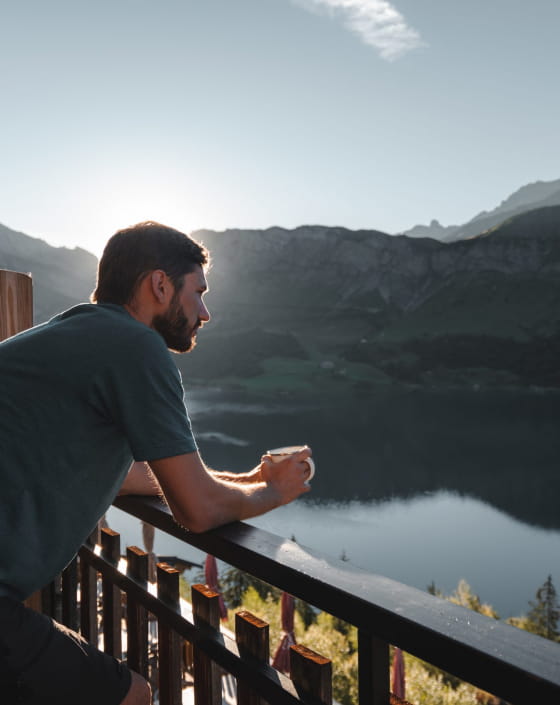
Roselend Dam
The time for lunch is near. David finds us the perfect spot for a picnic. On the top of the Roselend Dam. We can only imagine how the submerged hamlet once was. A village and its 300 hectares of pastures covered in water in 1960. The only vestige remaining is the Sainte Marie-Madeleine chapel, rebuilt on a cliff exactly as before.
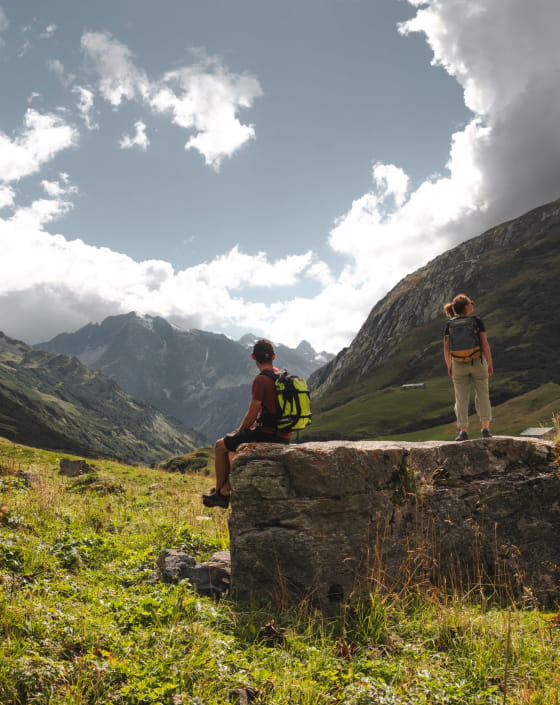
Chapieux Valley
Still want more? We make a pit stop at Fort Platte in Bourg-Saint-Maurice. A successful reconversion of a military look-out point at 2,000 metres high. In the 19th century, the relationship between France and the Savoie was a bit strained. Today, the site is the summer home for a family of farmers who produce their products from the mountain area.
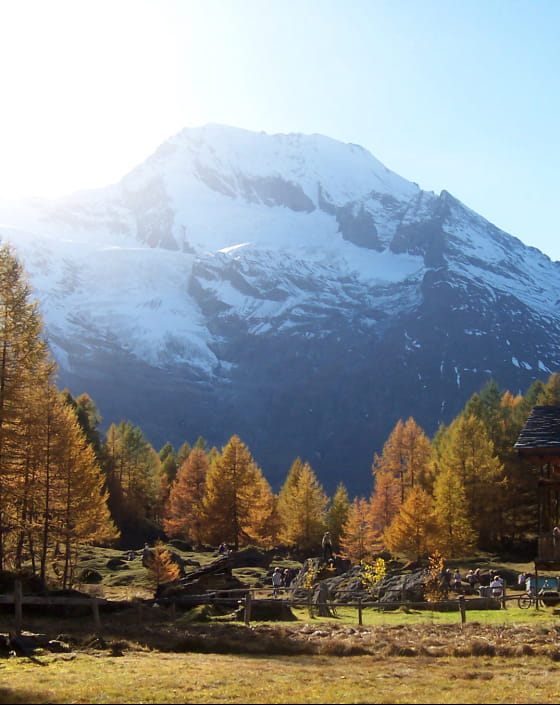
Sainte-Foy-Tarentaise
Before reaching the Col de l'Iseran, we stop for an architecture lesson. In the hamlets Le Miroir and La Masure, we admire a 17th-century innovation inspired by expertise in the Aoste Valley. Nestled one against the other, the aligned roofs of the columned chalets in the village allowed inhabitants to stock provisions, dry their items, and move about without getting their feet wet.
The legendary Route des Grandes Alpes
Seven hundred and twenty kilometres of asphalt connect Lake Geneva to the Mediterranean.
The ambitious project, born in 1909, was to create the 'most beautiful mountain route in the world'.
The car industry boom in the 1930s, paid holidays in 1936, and above all, the opening of the Iseran Pass in 1937 that connected the Maurienne and Tarentaise Valleys allowed the French to discover the circuit.
Learn more about the Route des Grandes Alpes
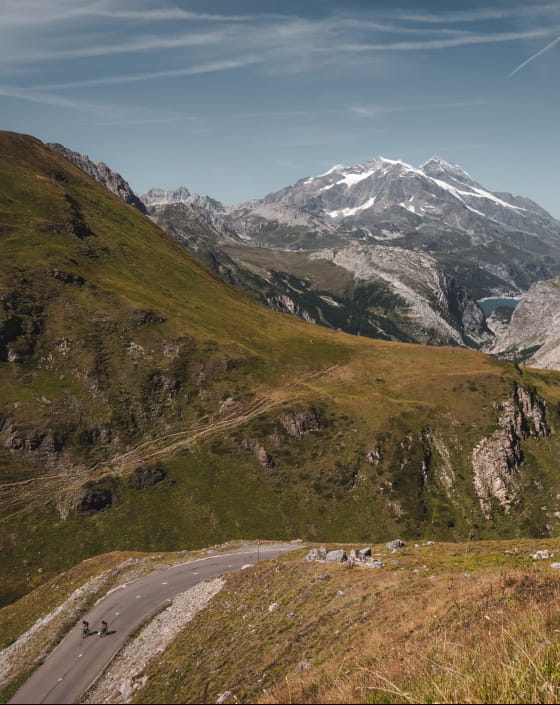
Col de l’Iseran
We wake up to a limpid sky. Off we go to the highest road pass in the Alps. The famous. The legendary. The truly courageous attempt it on bikes. Like the hundreds of Tour de France participants throughout the years. We tackle it by car. Perched at 2,770 metres high, the pass was inaugurated in 1937. We hang out for a bit under an hour. In silence. The sun rays are delighting us without constraint.
As a side note, the English mountaineer William Matthews was looking for the mythical Mont Iseran when he discovered the Grande Casse, the highest peak (at 3,855 metres) in the Savoie.
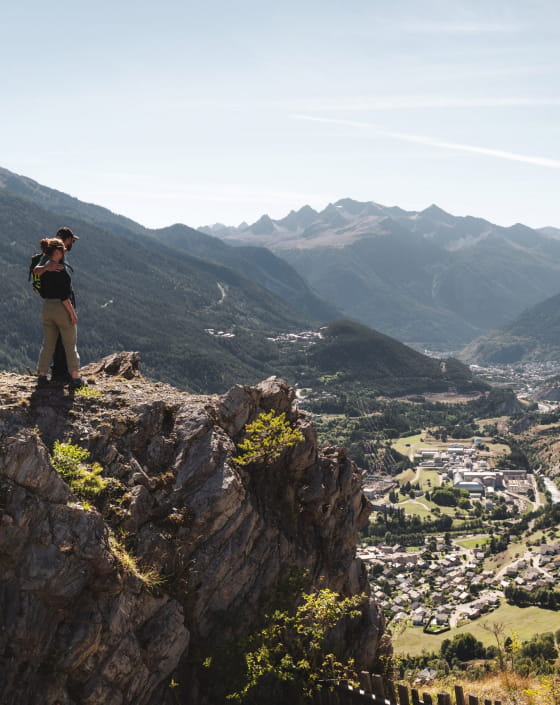
Bonneval-sur-Arc
We head down to one of the most beautiful villages in France in the Maurienne. It's a bit of a survivalist village. At 1,850 metres, abundant winter snowfalls often cut the village off from the rest of the world.
We walk along the heights of Bonneval-sur-Arc to understand its fortune. In fact, it owes its survival to its isolation. At the end of World War II, retreating German troops were unable to access it. It was spared from being burned to the ground. The neighbouring village of Bessans was not so lucky.
David Déréani, the mountain storyteller
An ‘ambassador’ for the Savoie Mont Blanc area, David Déréani is a licensed tour guide at the Action Culturelle Internationale en Montagne.
He's a specialist in baroque art and 20th-century architecture in ski resorts and a refined connoisseur of history in the Savoyard mountains. His knowledge is unbeatable: from the arrival of humans in 12,000 BCE to the creation of the alpine pastures in the Middle Ages, and on to the Industrial Revolution and the birth of the winter sports resorts.
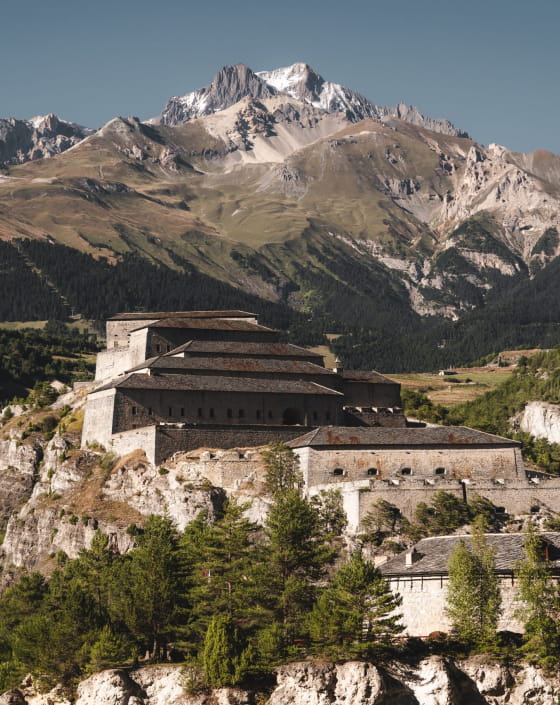
The Esseillon Forts
Our next stop is at five military forts. They were built in the 19th century but did not have the time to demonstrate their effectiveness because Napoleon III and Victor Emmanuel II of Italy finally called a truce. We could take photos here all day.
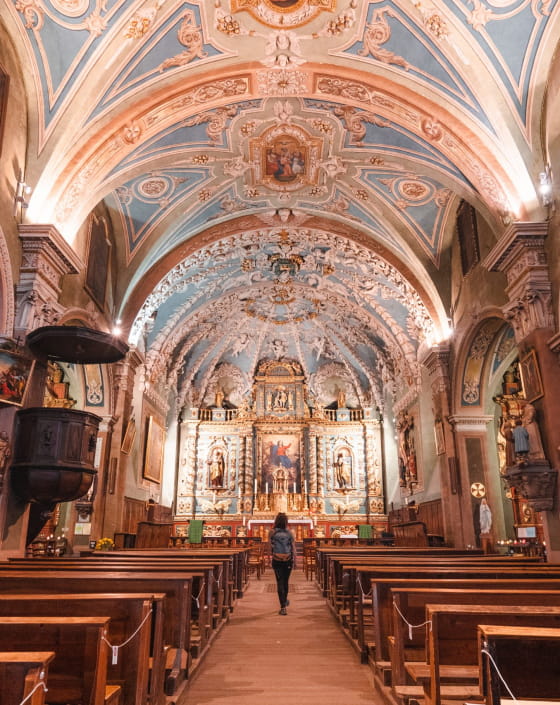
Valloire
A quick visit to a divine location for the last leg of our Savoyard excursion. We find ourselves transfixed at the Notre Dame de l'Assomption church. When we think about the Savoie, we think about the mountains, skiing, and fondue. But not baroque. And yet, it's there. The gilding, cherubs, and dynamism and movement in the sculptures. An overload for the senses. Valloire, a crossroads of commerce and travel to the Southern Alps, was rolling in the money. And you can tell.
Baroque art in the Savoie and Haute-Savoie
Stemming from the Counter-Reformation, the baroque movement and its excesses were filled with ingenuity and wonders. It spread across the whole area during the 17th and 18th centuries, peppering the countryside with small, golden décor chapels and high-ceiling hillside churches with colourful, golden, dazzling sculptures. The inhabitants' faith and the local artists' talents allowed a true emergence of veritable gems that are best discovered on foot or by car. The must-see sites are found along Les Chemins du Baroque —created in 1992 by the FACIM—with approximately 80 structures across the Savoie valleys. On the Haute-Savoie side, the Sentier du Baroque stretches from Combloux to Contamines-Montjoie, passing through Saint-Gervais and Saint-Nicolas de Véroce.
The Route des Grandes Alpes has come to an end for us. We have rejoiced in the scenic landscape. Honoured the local gastronomy. Travelled through one mountain pass after another. And taken a trip back in time. But for those who can continue, the route goes all the way to Nice on the Mediterranean Sea.
